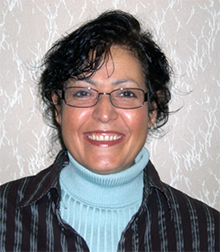
Sima T. Tarzami
Dept. of Physiology and Biophysics, Howard University, Washington, D.C. 20059, USA
Title: A unique network involving CXCR4 and CXCR7 coordinates cardiac lineage specification and mobilization of induced pluripotent stem cells
Submitted Date: 16-03-2017
Biography
Dr. Sima Tarzami received her B.Sc. and M.Sc. degrees from Hofstra University, New York, and her Ph.D. from Albert Einstein School of Medicine, New York, all in USA from 1992-2002. She has been a faculty in Mount Sinai School of Medicine from 2007 to 2014 and currently is an Associate Professor of Physiology at Howard University. Her major area of research is related to Induced Pluripotent Stem Cells expression, signaling and function of chemokine receptor-4 and -7. She has published more than18 peer reviewed papers and has been serving as an editorial board member of international journal of clinical and experimental medicine (IJCEM).
Abstract
An adult heart has an intrinsically limited capability to regenerate damaged myocardium. Human embryonic and induced pluripotent stem cell (hESC/hiPSC)-based therapies offer a unique strategy for developing cell replacement treatments for numerous disorders including cardiac diseases. The present study identifies a unique signaling network, SDF-1/CXCR4/CXCR7, that regulates cardiac lineage differentiation and migration in human induced pluripotent stem cells (hiPSCs). The fact that SDF-1 binds to CXCR4 and CXCR7 raises a concern how to distinguish the potential contribution of the SDF-1/CXCR7 pathway from SDF-1/CXCR4 pathway in all the processes that were previously attributed to SDF-1/CXCR4. Therefore, we set these studies to disseminate the role of the SDF-1/CXCR4/CXCR7 network in cardiogenic lineage differentiation and migration of hiPSCs with the premise that their improved recruitment could translate into therapeutic benefits. Using lentiviral vectors to ablate CXCR4 and/or CXCR7 expression, hiPSC-derived cardiomyocytes (hiPSC-CMs) were tested for phenotypic and functional properties due to gene knockdown. \r\nGene expression confirmed cardiomyocyte phenotype of differentiated hiPSCs, although reduction of CXCR4 and CXCR7 expression resulted in delayed cardiac phenotype. Only knockdown of CXCR4 reduced the spontaneous beating of hiPSC-CMs. Knockdown of CXCR4 and CXCR7 differentially altered calcium transients and β-adrenergic response in hiPSC-CMs. In engineered cardiac tissues, depletion of CXCR4 or CXCR7 had opposing effects on developed force. The transendothelial migration response to SDF-1 was suppressed by knockdown of either CXCR4 or CXCR7. In contrast, in a trans-well chemotaxis assay, only depletion of CXCR4 reduced hiPSC migration in response to SDF-1 indicating that both CXCR4 and CXCR7 have distinct roles in the SDF-1/CXCR4/CXCR7 axis as network coordinators of cardiogenic induction and mobilization of hiPSCs. We contend that gaining further insight into the molecular nuances of this phenomenon will provide new insights for optimization of the cardiac repair potential of cell-based therapies.\r\n
